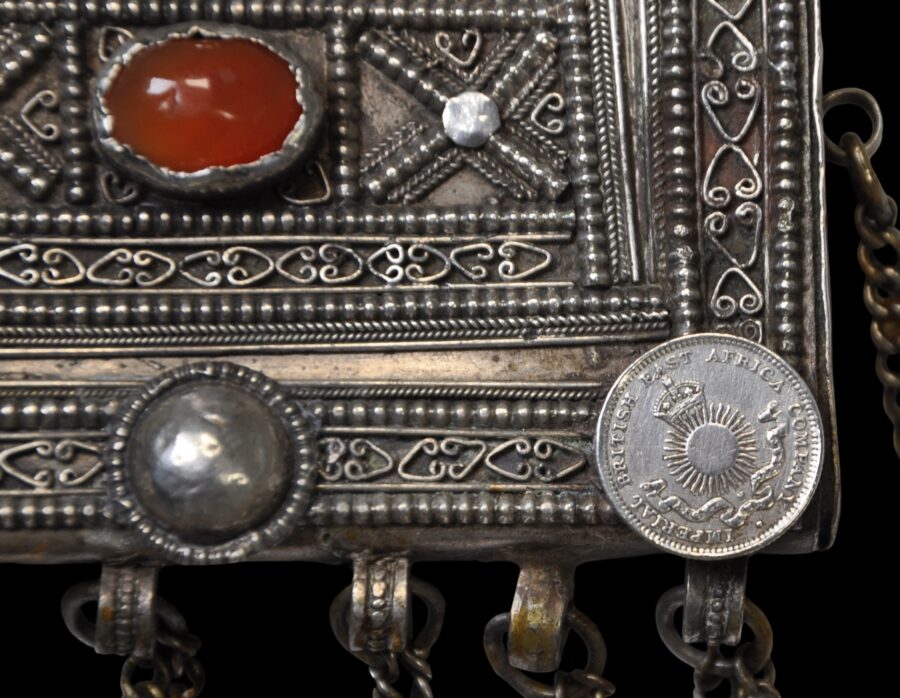Enquiry about object: 9612
Swahili Coast Silver Necklace & Hirz Box set with Rare British East Africa Company Coins
Swahili Coast, East Africa, probably Mombasa late 19th century
width of amulet pendant: 8.3cm, circumference of chain: approximately 86cm, weight: 221g
Provenance
UK art market
This unusual talismanic gilded silver hirz box is in an Omani style but with localised elements. The centre is set with an oval carnelian cabochon (carnelians are favoured in the Islamic world because the Prophet Muhammad is said to have worn a silver ring set with a carnelian). Numerous bells are suspended from the base and sides of the box. The box is further decorated with bands of applied silver filigree. The box is suspended from a silver chain.
In each corner of the box is a silver British East Africa Company two anna coin, dated 1890. This further suggests a Swahili Coast provenance.
British East Africa Company (BEAC) coins are rare (only 16,000 two anna BEAC coins were ever minted). They were minted by the Heaton Mint in Birmingham and shipped out to Mombasa. They were issued with only either one of two dates, 1888 0r 1890.
The BEAC occupied Mombasa, a small island on Kenya’s coast with an important sea port, and for two decades from 1887 after the Sultan of Zanzibar (who was essentially an Omani sultan who had relocated his court to Zanzibar) relinquished control of Mombasa to British administration, Mombasa served as the capital of British East Africa.
The box was entirely gilded originally, but much of this has worn away. The reverse however has retained much of its gilding as have the suspended bells.
The box is in excellent condition. It is of an elegant size. It is also a rare item being set with four British East Africa Company silver coins, suggesting particularly rare provenance.
References
Fisher, A., Africa Adorned, Collins Harvill, 1987.
de Vere Allen, J., Lamu, Kenya Museum Society, 1971.





